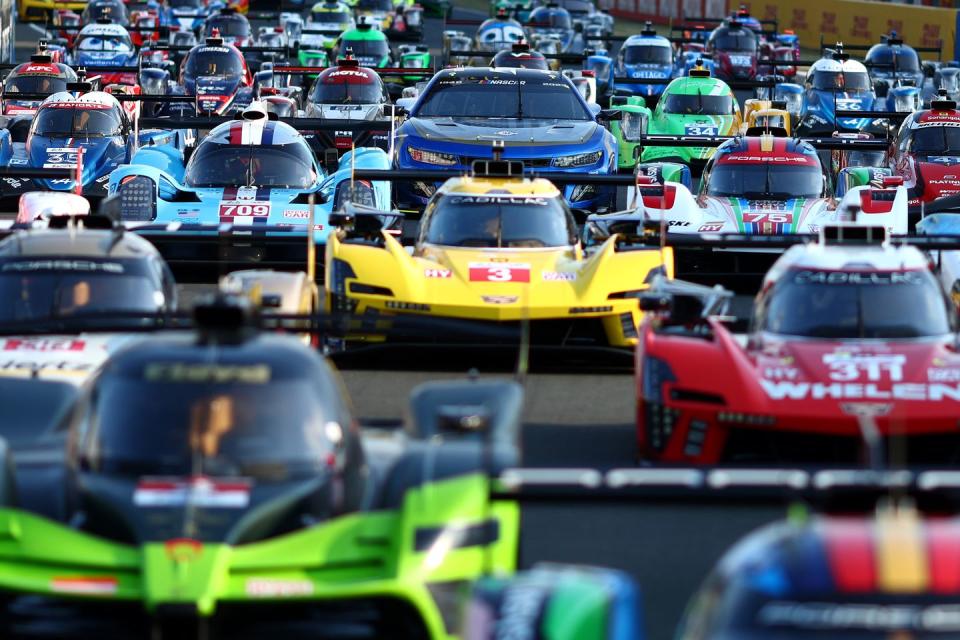The Le Mans 24-hour Race: A Legacy Of Speed And Endurance
Share
The Le Mans 24-Hour Race, held annually in Le Mans, France, is one of the most prestigious and grueling endurance races in the world. Since its inception in 1923, this event has become a symbol of automotive excellence and innovation, attracting teams and fans from around the globe. This article will take you through the rich history, key highlights, and what makes this race a must-see for motorsport enthusiasts.
A Brief History of the Le Mans 24-Hour Race
The Le Mans 24-Hour Race was conceived by the Automobile Club de l'Ouest (ACO) as a test of endurance for both drivers and vehicles. The first race took place on May 26-27, 1923, with only 33 cars participating. The event was designed to showcase the reliability and performance of automobiles, and it quickly gained popularity.
The race format is simple yet challenging: teams must cover the greatest distance possible within 24 hours. The event has evolved over the decades, with various classes of cars competing, including prototypes and grand tourers. The race has seen its share of triumphs and tragedies, with legendary drivers and manufacturers leaving their mark on its history.
Iconic Moments in Le Mans History
Throughout its long history, the Le Mans 24-Hour Race has produced countless memorable moments. Here are some of the most iconic highlights:
1. The 1955 Tragedy
The 1955 race is infamous for a catastrophic accident that resulted in the deaths of over 80 spectators. A collision between a car and a barrier sent debris flying into the crowd, leading to immediate changes in safety regulations in motorsport.
2. Ford vs. Ferrari
The rivalry between Ford and Ferrari during the 1960s is legendary. In 1966, Ford achieved a historic 1-2-3 finish, marking a significant victory over Ferrari. This rivalry was recently immortalized in the film "Ford v Ferrari," bringing renewed attention to this epic showdown.
3. The 1970s Dominance of Porsche
Porsche established itself as a dominant force in the 1970s, winning multiple races with its innovative designs and engineering. The Porsche 917, in particular, became an icon of the race, showcasing the brand's commitment to performance.
4. Audi's Technological Revolution
In the 2000s, Audi revolutionized endurance racing with its diesel-powered R10 TDI, which won the race in 2006. This marked a significant shift in technology and strategy, as teams began to explore alternative power sources for endurance racing.
5. The 2010s: A New Era of Competition
The 2010s saw fierce competition between manufacturers such as Toyota, Porsche, and Audi. The races were characterized by close finishes and strategic battles, captivating fans and showcasing the evolution of endurance racing.
What Makes the Le Mans 24-Hour Race Unique?
The Le Mans 24-Hour Race is not just about speed; it’s a test of strategy, teamwork, and endurance. Here are some factors that contribute to its uniqueness:
1. Team Dynamics
Each team consists of multiple drivers who take turns behind the wheel. This requires seamless coordination and communication among team members, as they must manage tire changes, refueling, and driver swaps efficiently.
2. Day and Night Racing
The race spans both day and night, adding an extra layer of complexity. Drivers must adapt to changing conditions, including varying light levels and weather, which can significantly impact performance.
3. Diverse Vehicle Classes
The race features multiple classes of vehicles, including prototypes and GT cars. This diversity creates exciting on-track battles and showcases the latest advancements in automotive technology.
4. Fan Engagement
The Le Mans 24-Hour Race is known for its vibrant atmosphere, with fans camping out and enjoying various entertainment options throughout the event. The camaraderie among fans adds to the overall experience, making it a festival of motorsport.
Best Time to Visit Le Mans
The Le Mans 24-Hour Race typically takes place in mid-June, making it an ideal time to visit the city. The weather during this period is generally warm and pleasant, with average temperatures ranging from 15°C to 25°C (59°F to 77°F).
Weather Information
- June Average Temperature: 15°C to 25°C (59°F to 77°F)
- Rainfall: Moderate, so be prepared for occasional showers.
Visiting during the race not only allows you to witness the thrilling competition but also to explore the beautiful city of Le Mans, known for its rich history and stunning architecture.
Things to Do in Le Mans
While the race is the main attraction, Le Mans offers plenty of other activities and sights to enjoy:
- Visit the Circuit de la Sarthe: Take a tour of the iconic race circuit and learn about its history.
- Explore the Old Town: Discover the medieval architecture and charming streets of Le Mans' historic center.
- Check out the 24-Hour Museum: Learn more about the race's history and see some of the most famous cars that have competed.
- Enjoy Local Cuisine: Sample delicious French dishes at local restaurants and cafes.
For those planning to attend the race, booking accommodations and flights in advance is advisable.
Book Your Stay and Travel
For hotel bookings, check out this link: Hotels & Flights. If you need transfers, you can find options here: Transfers.
Final Thoughts
The Le Mans 24-Hour Race is more than just a race; it’s a celebration of engineering, endurance, and passion for motorsport. Whether you’re a die-hard racing fan or a casual observer, the atmosphere and excitement of this event are truly unforgettable. As you plan your visit, remember to soak in the history, enjoy the camaraderie among fans, and witness the incredible feats of human and machine that define this legendary race.





